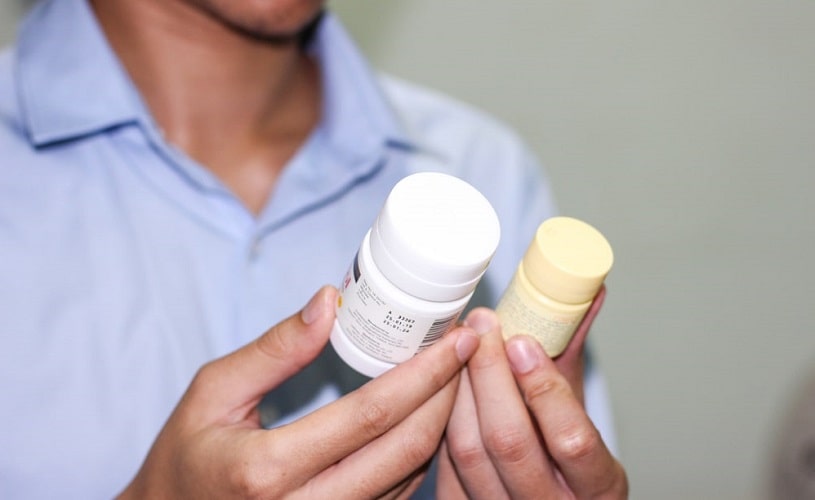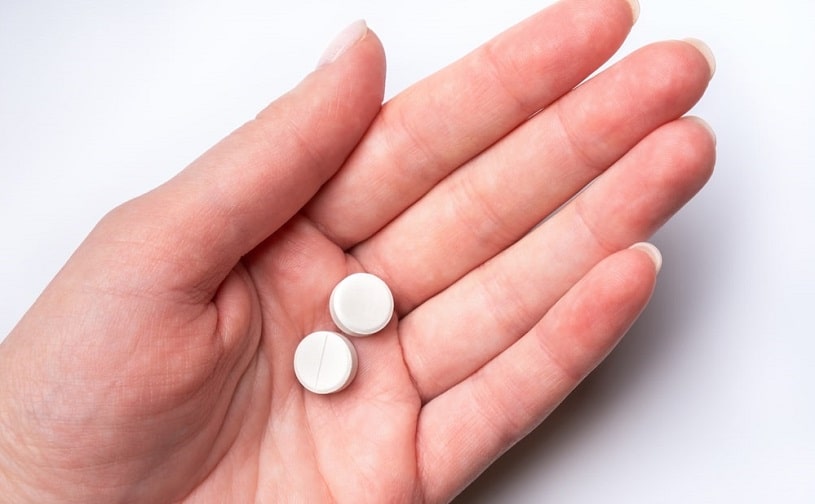Norco is a combination pain medication that contains hydrocodone (an opioid analgesic) and acetaminophen (a non-opioid analgesic). It is used in the treatment of moderate to moderately severe pain caused by health conditions such as cancer, chronic back pain, fibromyalgia, and so on. Acetaminophen is a less potent analgesic than hydrocodone, but combining both pain medications increases the treatment effectiveness. However, due to the opioid contained within the medication, several key Norco drug interactions may occur between Norco and alcohol and other drugs.
Table Of Contents:
Norco and Alcohol
The drug is considered a prescription pain medication because it contains hydrocodone which is an opioid. The relationship between Norco and alcohol is complex and multi-faceted. Combining Norco with alcohol during treatment can potentiate the adverse physical and psychological effects associated with each drug, including the risk of developing an opioid addiction. Certain resources have suggested that opioid addiction has been associated with increased rates of alcoholism and vice versa.
Side Effects Of Mixing Opioids with Alcohol
Several dangerous side effects may occur when somebody combines the prescription painkiller treatment and alcohol.
Mixing Norco With Alcohol Increases the Adverse Health Effects of Both Agents, Such As:
- Nausea
- Vomiting
- Dizziness
- Syncope
- Lowered pulse rate
- Reduced blood pressure
- Constipation
- Increased risk of overdosing
- Increased potential to abuse the medication and subsequently develop an opioid addiction
However, the most significant health danger associated with combining Norco and alcohol is the life-threatening sequence of slowed breathing, respiratory depression, unconsciousness, coma, and even death.
Liver Failure
The association between liver failure, the prescription analgesic Norco and alcohol can be explained through several mechanisms.
They Are:
- Chronic alcohol abuse damages the liver since the liver is the primary site of alcohol metabolism. Therefore chronic alcoholism is associated with reduced liver function, liver cirrhosis, and liver failure.
- Acetaminophen is metabolized within the liver and produces a hepatotoxic metabolite called N-acetyl-p-benzoquinone imine. Usually, the liver can effectively process this metabolite. Still, in situations of acetaminophen overdose or reduced liver function (for example, due to chronic alcoholism), this toxin may accumulate and lead to hepatic damage.
- Current information and research resources suggest that opioid abuse does not directly lead to hepatic impairment but may cause ischemic liver injury by causing reduced blood flow to the liver.
Norco and Ibuprofen
There are no known adverse health interactions due to the combination of Norco and ibuprofen. Combining Norco and ibuprofen, a pain medication that belongs to the class of drugs known as NSAIDs (nonsteroidal anti-inflammatory drugs), most likely will only lead to the anticipated side effects associated with the use of ibuprofen and Norco on their own. Therefore it is safe to combine both Norco and ibuprofen as far as they are taken within the recommended doses. Individuals who combine these drugs should keep in mind the ability of ibuprofen to cause gastric distress.

However, there are several combinations of hydrocodone and ibuprofen currently in use, such as Ibudone, Reprexain, and Vicoprofen.
Other Norco Drug Interactions
The most dangerous drug interactions are with medications that can depress the central nervous system. Some of these are well-known—such as narcotics. Others can sneak up on a patient—like antihistamines.
These risks are present no matter what doses a person is taking, though they become more significant when the amounts are higher.
Central nervous system depressants are dangerous to our health on their own, but when they are combined with other substances that are also CNS depressants, the effect can be deadly. This is because the central nervous system controls all vital functions of the body, including keeping the heart pumping and the lungs breathing. When the central nervous system is depressed too much, these critical functions can cease, and the patient can die. Below are some essential Norco drug interactions.
Opioids
Combining two opioids increases the risk of developing adverse effects associated with opioid narcotics and even increases the chance of developing an opioid addiction and an overdose.

A doctor is unlikely to prescribe two opioids at the same time. The doctor will have to weigh the pros and cons of similar medications, like Vicodin vs. Norco and choose the most appropriate one.
Opioid Antagonists
The use of opioid antagonists with opioids can limit the effectiveness of the drug significantly.
Tranquilizers/Sleep Medication
Combining these medications should be avoided due to the potential of both drugs to cause respiratory depression due to their ability to depress the central nervous system.
Benzodiazepines
Combining both benzodiazepines and opioids is unwise due to the potential of both drugs to cause respiratory depression due to their ability to depress the central nervous system.
Muscle Relaxants
Combining opioids with muscle relaxants, for instance, Flexeril and Norco may depress the central nervous system. Therefore combining Flexeril and Norco can lead to fatal respiratory depression.
Anticoagulants
Acetaminophen potentiates the activity of certain anticoagulants such as warfarin, leading to poor clotting ability and an increased tendency to develop spontaneous bleeds. However, there is little information concerning this important interaction.

Users need to understand that the results of mixing these medications will lead to much worse than just the intense side effects of opioids. Death is a real possibility. If a user feels they need a contraindicated medication, they will need to weigh their options and decide which is more important.
If someone truly needs to take one of these medications, it may be worth getting off the medication before starting the other medicine. However, users need to understand how long it takes for Norco to get out of the system first.
Interactions With Food
Finally, users need to consider that the drug also can interact with various foods. Grapefruit juice is the biggest culprit, and it can increase the concentration of hydrocodone in the plasma. It can build up to the point that the central nervous system is fatally depressed. Other citrus fruits can also cause problems, while caffeine can cause the heart rate to spike, causing harm. Opioid interactions can come from surprising places, and users need to remain alert.
Ending Opioid Use
The dangers of combining opioids with substances such as alcohol, benzodiazepines, and other opioids are numerous and potentially fatal. Users who are abusing opioids are at the highest risk of adverse effects. That is why seeking help at a drug rehabilitation center is the first stage in successful recovery from addiction. Seeking treatment for drug and alcohol abuse at a rehab center can help provide them with the resources and information they need to get clean in a safe and supportive environment. People must get clean at rehab as the process of detox is much more reliable than going cold turkey, as they may not have the required resources and information to deal with the withdrawal symptoms and have a higher risk of relapse. By turning to rehab, it is possible to live a better life and even help those around you struggling with similar issues.
Frequently Asked Questions
Can You Take Tramadol with Norco?
No, combining two opioid analgesics is not recommended due to the increased risk of developing adverse effects associated with opioid narcotics overdose. Tramadol is a weak opioid analgesic while hydrocodone is a moderately potent opioid; therefore, combining both is not advisable.
How Long After Taking Tramadol can I Take Norco?
Typically you can switch from tramadol to hydrocodone at the next expected tramadol dosing time. It may be 4-6 hours for immediate-release tablets. For extended-release tablets, the equianalgesic dose of hydrocodone should be taken the next day.
Can I Take Tylenol with Norco?
No, this is because Tylenol is a branded form of acetaminophen, one of Norco’s components. Therefore taking them together means you will be taking more than the recommended dose of acetaminophen, which may lead to liver damage.
Hope Without Commitment
Find the best treatment options. Call our free and confidential helpline
Most private insurances accepted
Page Sources
- Stephen J Farr, Cynthia Y Robinson, Christopher M Rubino. Effects of food and alcohol on the pharmacokinetics of an oral, extended-release formulation of hydrocodone in healthy volunteers. Clin Pharmacol. 2015; 7: 1–9. https://www.ncbi.nlm.nih.gov/pmc/articles/PMC4307648/
- Cara Tannenbaum, Nancy L Sheehan. Understanding and preventing drug–drug and drug–gene interactions. Expert Rev Clin Pharmacol. 2014 Jul 1; 7(4): 533–544. https://www.ncbi.nlm.nih.gov/pmc/articles/PMC4894065/
- Xiu-qin Feng, Ling-ling Zhu, Quan Zhou. Opioid analgesics-related pharmacokinetic drug interactions: from the perspectives of evidence based on randomized controlled trials and clinical risk management. J Pain Res. 2017; 10: 1225–1239. https://www.ncbi.nlm.nih.gov/pmc/articles/PMC5449157/
- Cushman P., Jr (1987). Alcohol and opioids: possible interactions of clinical importance. Advances in alcohol & substance abuse, 6(3), 33–46. https://pubmed.ncbi.nlm.nih.gov/2821747/
- National Institute on Drug Abuse. Benzodiazepines and Opioids, 2021. https://www.drugabuse.gov/drug-topics/opioids/benzodiazepines-opioids
- LiverTox: Clinical and Research Information on Drug-Induced Liver Injury [Internet]. Bethesda (MD): National Institute of Diabetes and Digestive and Kidney Diseases; 2012-. Opioids. https://www.ncbi.nlm.nih.gov/books/NBK547864/
- Yoon, E., Babar, A., Choudhary, M., Kutner, M., & Pyrsopoulos, N. (2016). Acetaminophen-Induced Hepatotoxicity: a Comprehensive Update. Journal of clinical and translational hepatology, 4(2), 131–142. https://www.ncbi.nlm.nih.gov/pmc/articles/PMC4913076/

 Authored by
Authored by  Reviewed by
Reviewed by 

